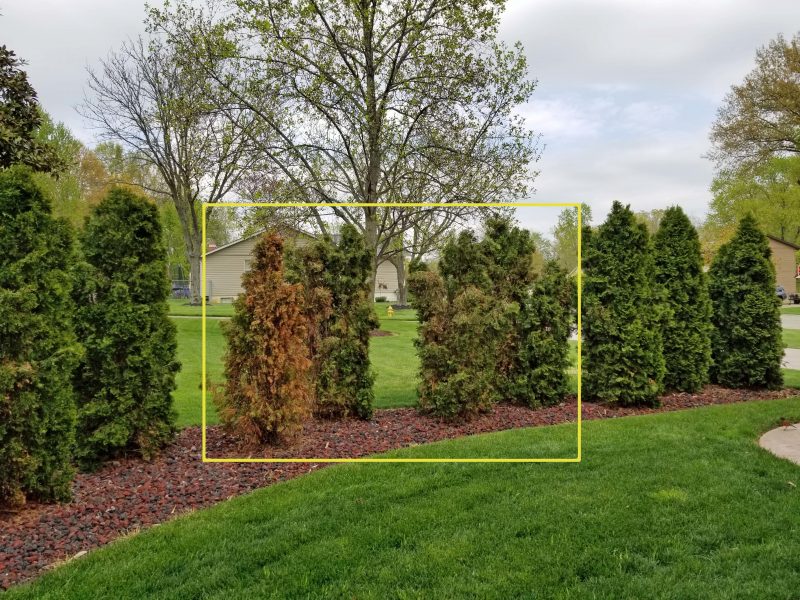Three years ago, we planted an arborvitae hedge. The trees on each end are doing very well, but the trees in the middle don’t want to grow. One tree died in the first year and was replaced under the warranty, but now we have four trees in the center area that are failing. The difference in size between the trees on the ends and those in the middle is obvious. You can’t see between the end trees, but there’s lots of space between the stubby center ones–just where we want the privacy. The trees were all planted at the same time except for the totally brown one, which was replaced after the first year. The replacement lasted about 18 months. That spot in the ground has now killed two trees in three years. When we ordered this round of replacements, the landscaper suggested having the crew overdig the holes and put in new soil.

The landscaper’s suggestion made us think a soil test might be a good idea. I thought we’d have to go through the county extension service, or at least a nursery, to get an expert to perform a soil test. I shouldn’t have been surprised, but when I searched online for someone to do a soil test, I discovered that soil test kits are available at–where else?–Wal-Mart.
This is the stuff included in the testing kit. As I set out the instructions, the soil samples, the test tubes, the chemistry tablets, the distilled water, and the color chart, I felt like Bill Nye the Science Guy. All I needed was safety goggles. It brought back memories of high school chemistry class when we did experiments on Fridays.

Soil testing isn’t hard, but it’s definitely time-consuming. It took me about four hours to test six soil samples. The results showed that our troubled center section of arborvitae trees could use some pH and a lot of nitrogen, and our magnolia trees could also benefit from some nitrogen. Ted bought some nitrogen and treated the magnolia trees. The landscaper’s plan to add new soil might solve the arborvitae problem, but I guess we’ll have to test the new soil to find out.